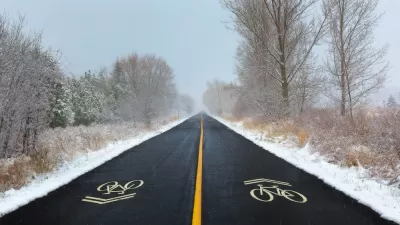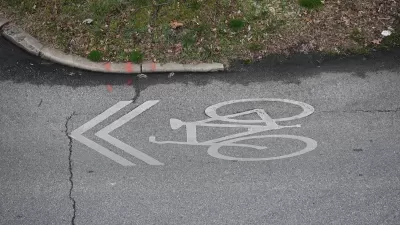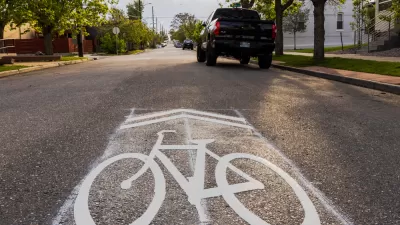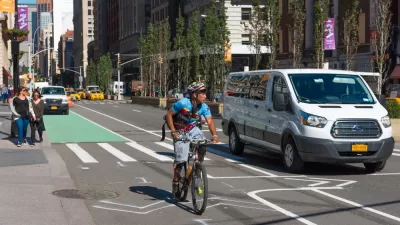The lane marking was meant to raise awareness and instill shared respect among drivers and cyclists. But their inefficiency has led supporters to denounce sharrows, pushing instead for more robust bike infrastructure that truly protects riders.

Dave Snyder, senior director for infrastructure at PeopleForBikes and the former executive director of the California Bicycle Coalition, was an early and enthusiastic supporter of the sharrow, a lane marking designed to make drivers aware that they are sharing space with bikes and encourage people on bikes to claim the lane rather than riding in the dangerous ‘door zone.’
According to Snyder, “I thought the sharrow would educate bicyclists to stay out of the ‘door zone’ and usher in a new era of safer streets, one where motorists would patiently wait behind bicyclists ‘taking the lane’ because this painted symbol made it clear they had the right to do so.” But Snyder admits the markings are clearly not enough to change behavior. “Sharrow or no sharrow, most people on bikes dangerously hug the edge of the roadway, squeezing themselves into the door zone to avoid blocking car traffic.” Now, after two decades of data and lived experience, Snyder believes that sharrows “are great for navigation and, perhaps, concentrating riders on certain streets — that’s about it.”
If anything, Snyder points out that sharrows have an unintended effect that is “insulting” to the bike-riding public: “They allow officials to take credit for doing something for bicycle safety without impacting car traffic, even though that something is next to nothing.”
Snyder emphasizes that bike advocates like him and his current organization, PeopleForBikes, now acknowledge the failures of sharrows and have stopped recommending them. “Today, we know so much more about what it takes to make our streets safer for bicycling. We need separate bike paths; we need protected bike lanes on busy roads; and where the lanes are shared, we need actual speeds reduced to 20 mph or slower.”
FULL STORY: Big Admission: ‘I Was Wrong About Sharrows’

Alabama: Trump Terminates Settlements for Black Communities Harmed By Raw Sewage
Trump deemed the landmark civil rights agreement “illegal DEI and environmental justice policy.”

Study: Maui’s Plan to Convert Vacation Rentals to Long-Term Housing Could Cause Nearly $1 Billion Economic Loss
The plan would reduce visitor accommodation by 25% resulting in 1,900 jobs lost.

Planetizen Federal Action Tracker
A weekly monitor of how Trump’s orders and actions are impacting planners and planning in America.

Restoring Northern India’s Himalayan ‘Water Temples’
Thousands of centuries-old buildings protect the region’s natural springs and serve as community wells and gathering places.

Milwaukee to Double Bike Share Stations
Bublr Bikes, one of the nation’s most successful, will add 500 new e-bikes to its system.

DC Extends Application Window for Outdoor Dining Permits
District restaurants will have until the end of November to apply, but businesses with permits in rush hour parking lanes must end operations on July 31.
Urban Design for Planners 1: Software Tools
This six-course series explores essential urban design concepts using open source software and equips planners with the tools they need to participate fully in the urban design process.
Planning for Universal Design
Learn the tools for implementing Universal Design in planning regulations.
Caltrans
Smith Gee Studio
Institute for Housing and Urban Development Studies (IHS)
City of Grandview
Harvard GSD Executive Education
Toledo-Lucas County Plan Commissions
Salt Lake City
NYU Wagner Graduate School of Public Service





























